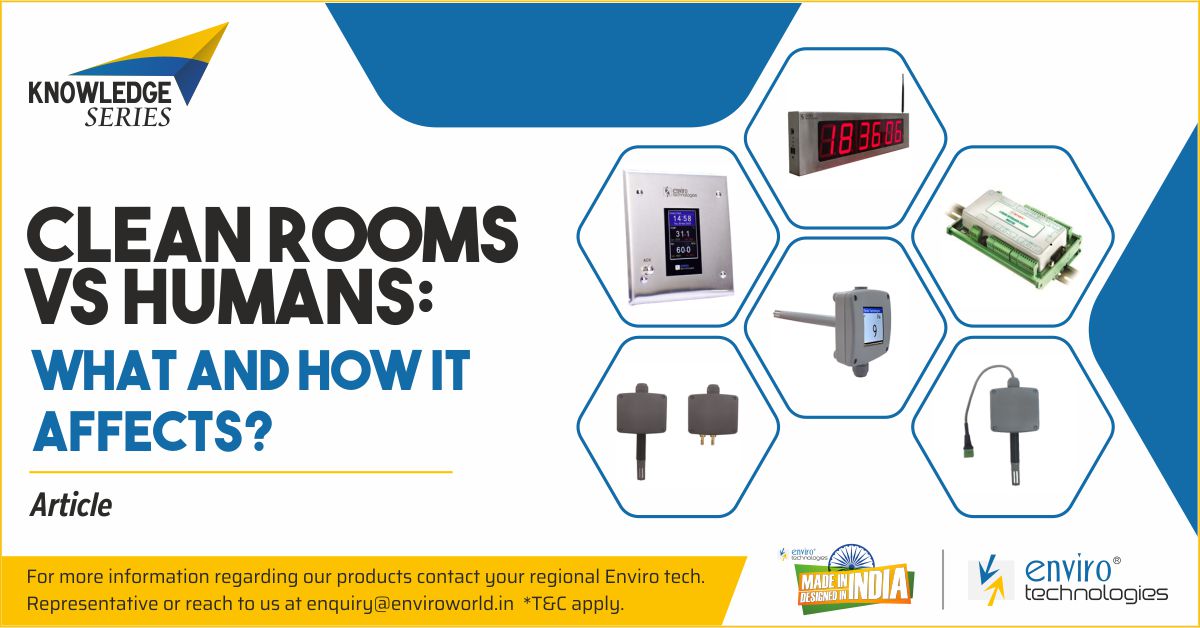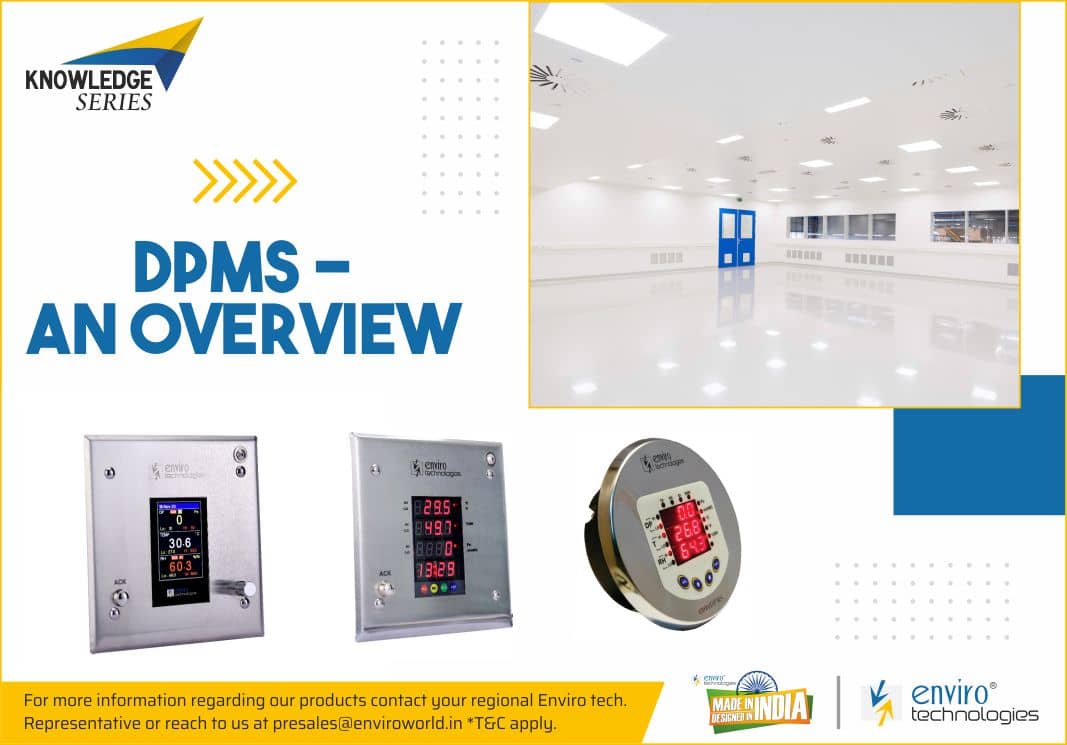What is a cleanroom?
A cleanroom is a delimited space in which contaminants like airborne microbes, aerosol particles, and dust are sifted out contributing to offer the cleanest environment that is possible. The cleanrooms are mostly used for the purpose of manufacturing goods like pharmaceutical products, medical equipment, and electronic devices.
The classification of the cleanrooms is based on varying levels of contamination that is what quantity of the particles are permitted in the area, per cubic meter. It also regulates variables like humidity, temperature, and airflow.
Working of a Cleanroom
Cleanrooms are fundamentally involved in the removal of particles, contaminants, and pollutants from the external air of the environment. The external air is first passed through a filter system. Consequently, the filter purifies, decontaminates, and disinfects the external air based on the provided specifications. This clean air is pushed into the cleanroom. Furthermore, the contaminated air inside the cleanroom is either pushed outside the room with the help of registers, or it is passed through the filters again and thus, the process continues.
Need for a Cleanroom
There could be various reasons for which an organization or a company may require a cleanroom. For example, if a manufacturing company is creating a product that can be adversely affected by air particles, pollutants, or contaminants, then cleanrooms are of utmost necessity for the company.
A few common companies and industries that generally use cleanrooms are medical laboratories, nanotechnology production, electronic part production, optics and lens manufacturing, research facilities, military applications, manufacturing companies, the aerospace industry, and pharmaceutical companies.
Keeping a Cleanroom Clean
The maintenance of the cleanroom is a tedious task. The cleanrooms are sensitive, and anything that enters the cleanroom is likely to discharge particles that can contaminate the room. The biggest risk is humans. The focus now shifts to the fact that how can the standards of the cleanroom can be maintained. A few fundamental concepts are provided below to maintain a high level of cleanliness in the cleanroom:
- Gowning: The biggest threat to the sanctity of the cleanrooms is humans. Human beings are filled with particles. To ensure the safety of the cleanroom the most important part is to establish guidelines for any person entering the cleanroom. Thus, before human beings enter the cleanroom space it is necessary for them to be properly gowned to avoid any kind of contamination like hair fall, skin flakes, or any other particle. The protective clothing includes a gown and gloves or it can also be a full head-to-toe costume with a mask and goggles. The clothing is decided as per the standards of the company and the staff should strictly wear that clothing before entering the cleanroom.
- Cleanroom furniture: The furniture might just lay in the room and still emit particles that might be harmful to the cleanroom. Therefore, special furniture is manufactured to reduce the contamination and dust that can be formed on the furniture. It is in the best interest of the company to invest in cleanroom furniture to avoid its contamination.
- Air Shower: The number of particles carried in the cleanroom can be limited with the help of an air shower. This can be used along with the gowning room to blow off any extra particles that could be easily carried by the person going inside the cleanroom. It ensures extra safety to reduce contamination.
- Sticky flooring: The use of sticky flooring is most effective when the particles of contamination are wheel-borne or foot-borne. The sticky flooring is comparatively more effective and robust as compared to the sticky mats. They can last up to five years if they are properly maintained and timely cleaned. For a high-standard cleanroom, it can be beneficial to add sticky flooring.
Proper Gowning Techniques
The gowning process is one of the major factors that help to control the contamination produced due to human beings. It might seem like a tedious task but for the effectiveness of the cleanroom, gowning properly can protect the cleanroom environment.
It needs to be ensured that the company’s employees follow the proper procedure before entering the cleanroom to safeguard the environment. The employees should have a clearer understanding of the various areas of the gowning space.
Mostly, most of the gowning areas have a dressing room and an area called a cleaner area. The employees should also be aware of these boundaries. They should also be aware of the different places to stand at the different points in the gowning process. Nevertheless, that most gowning processes will differ based on the norms created by the company.
1. Perfumes and Cosmetics: The gowning process start from home if you’re working in a cleanroom. The products like perfumes, hair-gels, make-up, and so on, emit additional particles and fumes. Therefore, to maintain the cleanliness of the cleanroom it is vital not to wear such kinds of products.
2. Remove Personal Items: Similar to cosmetics, personal items like jewellery, also give off additional, unimportant particles in the air. Thus, personal items should be removed before entering the cleanroom.
3. Change Shoes: The most common source of contamination is the shoes. They go everywhere along with a person so there is a lot of dust that is collected. To avoid any particles from entering the cleanroom, it is a good ritual to change the shoes used in the office. After changing the shoes and before entering the gowning it is also necessary to use a sticky mat to get rid of any extra particles.
4. Enter Gowning Area: The gowning area has a gowning room for getting dresses. Before wearing the gowning clothes, it is important to put on a set of slip-on gloves to remove contamination of gowning clothes. The gowning should be from head to toe, this helps to reduce particles from dropping onto gowned parts.
5. Don Bouffant: You will also have to cover your hair using a hair cover cap. It is important to make sure that you only contact the inside of it and make sure that the entire hair is masked.
6. Don Coverall: The coverall is an entire piece that you wear from your feet and moves upwards. The other kind of coverall is a two-piece. It is necessary to ensure that the coverall has not been in contact with the floor or wall. The gown should be properly zipped.
7. Booties or Shoe Covers: The Don booties also called shoe covers, are supposed to be tucked in the pants into the shoe covers. Then enter the cleaner area rather than the gowning area. For the cleanest practice, use the automatic shoe cover dispenser in the cleanroom.
8. Don Goggles or Shield: The use of don goggles or a face shield depends on the requirement of the company. Some cleanrooms may even skip this step.
9. Pair of Gloves: The first pair of gloves can be now removed and another pair of gloves are put on.
10. Enter: After gowning properly, you can enter the cleanroom. It is important to ensure that you have not touched anything before going inside the cleanroom or else you will have to start over the entire process.
Conclusion
To control the contamination of the cleanrooms it is vital to be cautious. Thus, cleanrooms are supposed to follow strict procedures and norms. The extent of the pollutants that can enter the cleanroom ranges from hair to chemical. The cleanrooms should have standard protocol and the product or the equipment should be chosen carefully.
Enviro Technologies strives to keep our workplaces, and business units safe from threats and security attacks with its innovative and hassle-free products. We develop, manufacture and market high-performance Monitoring & Recording Systems for Temperature, Pressure, Humidity and other critical parameters for a wide range of applications. With decades of experience behind its back, Enviro Technologies is charging ahead with relentless progress and consistent performance.




















